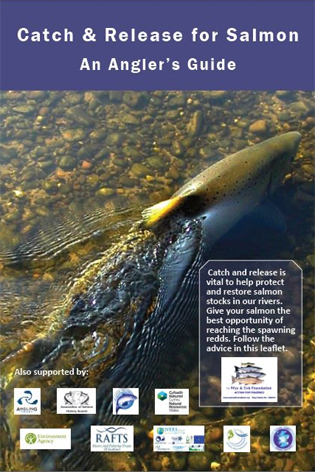 Scotland’s wild fisheries organisations have combined with their counterparts south of the border to produce a new angler’s guide on Catch and Release for Salmon. The guide’s primary purpose is to provide practical advice and guidance to anglers to maximise the survival of salmon which anglers choose to release for conservation purposes.
Scotland’s wild fisheries organisations have combined with their counterparts south of the border to produce a new angler’s guide on Catch and Release for Salmon. The guide’s primary purpose is to provide practical advice and guidance to anglers to maximise the survival of salmon which anglers choose to release for conservation purposes.
Brian Davidson, Operations Director for the Association of Salmon Fishery Boards (ASFB) and the Rivers and Fisheries Trusts of Scotland (RAFTS), said: “Over the last 20 years catch and release in Scotland has grown exponentially to the point that now the great majority of salmon caught by anglers are carefully returned to the water. This practice has become a very important conservation measure and in 2012 (the last available official figures) 74% of fish caught by anglers were released; the figure 20 years ago was just 8%. The figure for spring salmon released in 2012 (caught prior to the end of April) was even higher at 91%”.
Mr Davidson continued: “The new leaflet promotes best practice for catch and release. There is no doubt that with careful handling, fish survival is very high. The evidence is irrefutable; radio tracking studies show almost all salmon returned will suffer no ill-effects from angling. On the River Dee, at least 96% of salmon caught by anglers survived and migrated upstream for spawning. Similarly on the River Eden, in Cumbria, a study in which 200 salmon were captured by anglers and then tagged and released, confirmed 98% survival. Further research in Canada demonstrated that rod caught Atlantic salmon recover from the stress associated with angling within four hours, survive to spawn and have subsequent egg survival of 98%”.
Salmon angling is highly important to Scotland in both economic and cultural terms. Catch and release allows fisheries to remain economically viable and at the same time ensure conservation remains a high priority. It increases the number of salmon which would otherwise not have been able to spawn; this allows many more eggs to be deposited which in turn should increase juvenile numbers. Most catch and release policies are implemented on a voluntary basis, relying on a lead from fishery owners, fishery boards, trusts with critical support from anglers.
